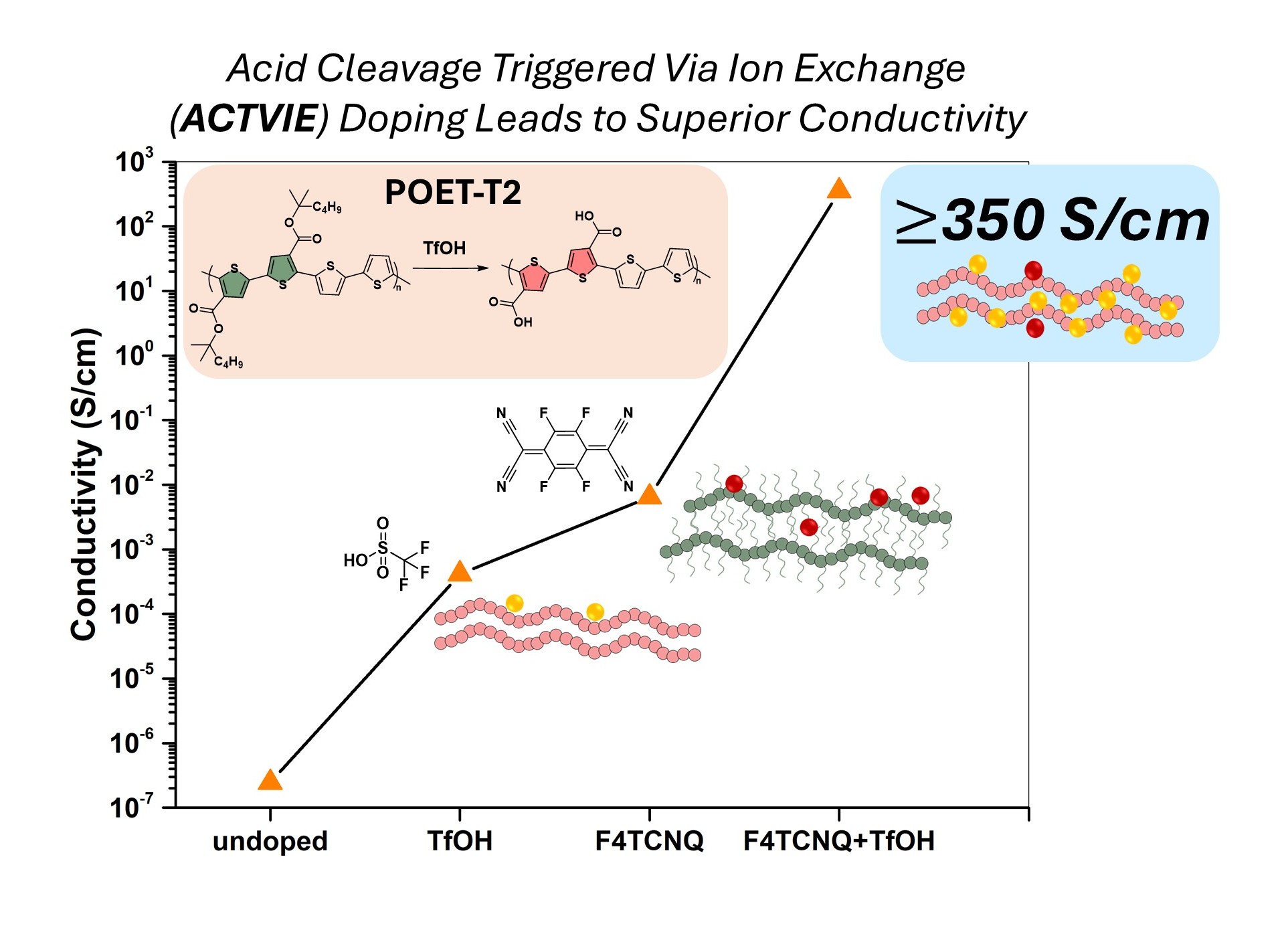New Approach Boosting Polymer Conductivity 100,000 Times Holds Immense Potential for Organic Electronics

The new polymer is designed so that when an acid called TfOH is added, it removes insulating parts (C4H9), leaving behind OH groups on the polymer's main chain. This makes the polymer better at conducting electricity.
October 29, 2024 | By Dave DeFusco
Researchers in the Department of Chemistry have introduced a new conjugated polymer, called POET-T2-COOH, that achieves electrical conductivities 100,000 times greater than comparable polymers, marking a leap forward in materials for electronics, according to their study “Acid-Triggered Side Chain Cleavage Leads to Doped Conjugated 2 Polymers of High Conductivity” in the Journal of the American Chemical Society.
Conjugated polymers are a class of organic polymers with alternating single and double bonds along their backbone, allowing them to conduct electricity after being enhanced with special chemicals—a process called doping. These polymers are of interest to researchers because they combine the mechanical flexibility of plastics with the electrical properties of semiconductors or metals, making them ideal for various electronic and optoelectronic applications. In 2000, the Nobel Prize in Chemistry was awarded to Alan Heeger, Alan MacDiarmid and Hideki Shirakawa for the discovery and development of conductive polymers.
This study focuses on a new type of polymer—a material made of long, repeating molecular chains. Traditional polymers have side chains that don’t conduct electricity well, making them less efficient. The new approach, termed “cleavage with doping,” or Acid Cleavage Triggered Via Ion Exchange (ACTVIE), removes these insulating side chains, which helps the polymer conduct electricity better and makes it more stable after doping. It synergistically merges the effects of strong acids with a primary dopant to generate high-performance polymers that outperform those produced by traditional doping techniques.
“The dramatic increase in conductivity holds immense potential for applications in optoelectronics, sensors and flexible electronics,” said Dr. Wei You, senior author of the paper and professor of chemistry. “POET-T2-COOH outshines other polymers by conducting electricity very efficiently. Think of it like a flexible, plastic-like material that can act like a metal wire, but with some cool extra features.”
Treating POET-T2-COOH with the dopant F4TCNQ and a strong acid significantly enhanced its conductivity, setting a new standard for electrical performance, while also improving its solvent resistance and stability. The doped films retained their conductivity after 50 days in inert conditions, showed no degradation after exposure to temperatures of 100°C and remained resistant to solvents like chloroform, making it more durable than conventional polymers used in electronics.
“This research opens a new stage for conducting polymer design” said Jordan Shanahan, a lead author of the paper and Ph.D. student in the Department of Chemistry. “Our findings underscore the importance of molecular engineering and innovative processing for the future of advanced materials.”

